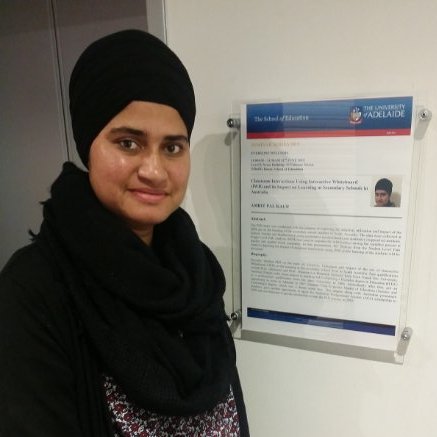Learning with technology
In this digital age, technology has embedded in each and every aspect of life and education is no exception. It has become crucial for the educational sector to keep up with fast-paced technological advances because it is not possible to push our tech-savvy students to their full potential by using traditional ways of teaching and learning. So, the educational scenario around the world is changing and the latest technological tools are being introduced into the classrooms with the aim to enhance learning. The educational research in the field of use of technology is also showing a positive picture with evidence indicating that if used properly, technology can, not just enhance learning, but also add a whole new dimension to it. In this blog, I have discussed about these benefits of learning with technology by focusing on one technological tool which has recently find its way into the classrooms. This technology is known by different names, some of them are: Interactive Whiteboard (IWB), Electronic Whiteboard, Digital Whiteboard and Large Format Touchscreen (LFT).
...when students are exposed to interactive or enhanced interactive learning environment created by the use of these touch screens, they tend to adopt deeper approach to learning and develop higher order learning skills.
There are two reasons for choosing this particular technology to elaborate my points on learning with technology. Firstly, being an academic and education researcher, my preference is to base my discussion on the actual research evidence which I can provide from a large scale research study I conducted to investigate the impact of these boards on student learning. This study was first of its kind, which included 269 students and 30 teachers from 12 South Australian secondary schools, to provide an evidence of a link between the use of Interactive Whiteboards/Touchscreens and student learning in Australian context. Secondly, this technology is a combination of many Information and Communication Technologies (ICTs) working together as one unit, so the research findings related to this give a perfect insight into how various present day ICT tools can be used to enhance the learning environment of the students. Basically, in all these boards, a large-sensitive touch screen or display panel, accompanied by a software, is connected to a computer through a projector.
This screen can be directly controlled by hand or a special stylus, or indirectly by a computer mouse or keyboard to write, type or draw on the surface which can then be saved, altered or printed out.
These Interactive Touchscreens have been widely adopted in many countries, especially in UK and USA. Australian education sector is also enthusiastically moving in the direction of equipping the classrooms with this technology. This fast paced adoption of this technology is due to its unique feature of facilitating multimodal presentation of teaching and learning material which users can view, create, manipulate, save, retrieve and distribute using computer-based interactivity. Moreover, research has found that if used properly, these kinds of interactive touch screens make students more engaged, motivated, focused and interested in their learning. As being large in size, these touch screens are ideal for allowing the whole class or small group of students to engage with same central focal point and hence can be used to promote collaborative and interactive learning. In other words, these screens promotes the interaction between the teachers, students, subject matter and the technology itself, which creates an enhanced learning environment within the classroom. As far as encouraging the collaborative learning is concerned, these touch screens are found to be ideal to support collaboration, not just between the students within same classroom, but also between the students from different classrooms within same school or between classes from different schools.
Interactive Touchscreens have also been reported to play positive role in helping students with kinesthetic/tactile learning preference; students with visual or other physical disability; and students who need extra support in learning. Most importantly, it has also been found in my study that when students are exposed to interactive or enhanced interactive learning environment created by the use of these touch screens, they tend to adopt deeper approach to learning and develop higher order learning skills. This kind of learning is needed to develop innovative, imaginative and creative tendencies among our students. It is also necessary that our students learn the effective use of technology for working and learning in a collaborative manner. These skills are essential to face the challenges of future workforce and society, and Interactive Whiteboards/Touchscreens and other such modern day technologies can play important part in helping the students to develop these qualities.

Dr Amrit Pal Kaur PhD
University of Adelaide

Dr Amrit Kaur is a recent PhD graduate in Education from the University of Adelaide. For her PhD in the School of Education, Dr Kaur investigated the adoption and impact of interactive whiteboard use on student learning. Her study involved 12 South Australian public and independent secondary schools, with 269 students and 30 teachers participating in the research.
Dr Kaur additionally has a Master of Science (Hons.) and Bachelor of Education from Guru Nanak Dev University in India, as well as her Master of Education (Science & Technology) from the University of Adelaide. She is a guest lecturer at the same institution and is in the process of working on further research pieces for publication.
News & Events
Keep up to date
-
28 Oct
Ricoh Australia Named a Finalist in the ARN Innovation Awards for Sustainability
-
17 Oct
Ricoh recognised among Forbes’ World’s Best Employers 2025
-
19 Sep
Ricoh named in TIME World's Best Companies of 2025 for employee engagement, growth and sustainability
-
27 Aug
CMYK Colour Online Renews Contract with Strategic Print Partner Ricoh
